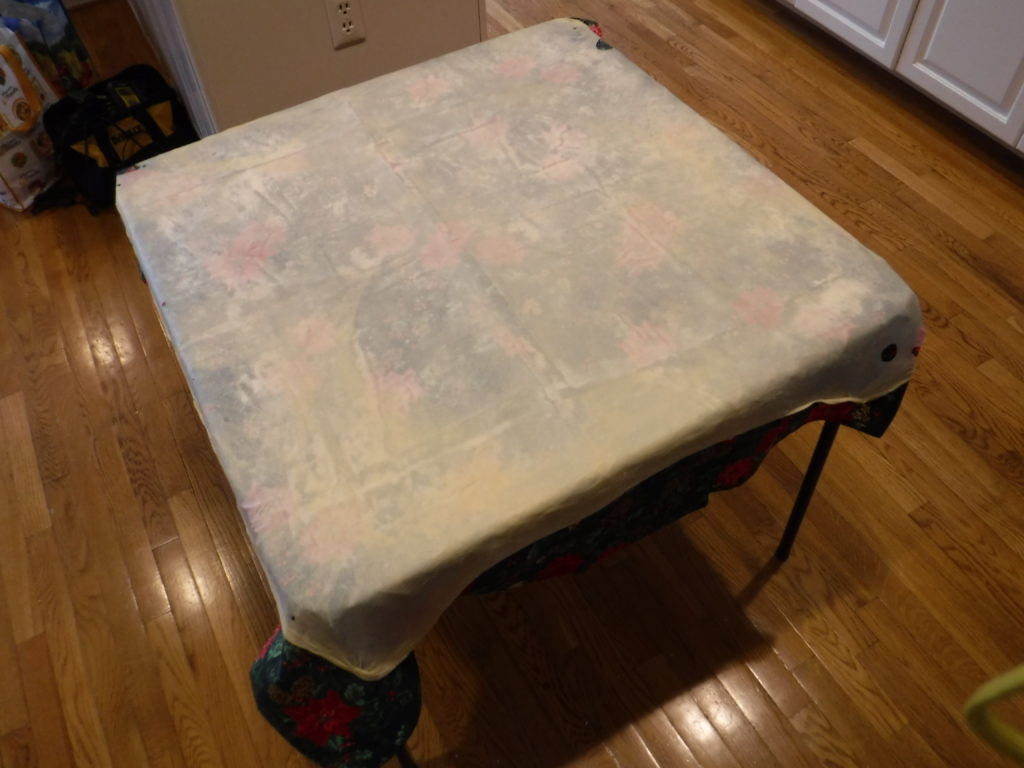
Above photo is a fully pulled batch of strudel dough.
On one of my business trips to Budapest, I spent a lot of time looking around the Central Market. The highlight was watching a husband-wife team make strudel after strudel. It was amazing to watch the two of them take a blob of dough and in about 90 seconds stretch it out to cover a tablecloth covered table. They would then fill the strudel and would use the cloth to roll it up. It took them a very short time to turn a bowl of dough, a bowl of filling, and some melted butter into a strudel ready for baking. Practice makes perfect.
This version is adapted from Nick Malgieri’s lessons on Craftsy. It is a great example of how precise baking is, and how important technique can be. The dough ends up being extremely extendable. As shown in the photo, it was so thin that the pattern on the tablecloth was clearly visible.
½ cup (112 g.) warm tap water
1 large egg
1 Tbs. vegetable oil (such as safflower oil), plus ½ tsp. oil for greasing the bowl
Large pinch of salt
1-2/3 cups (225 g.) unbleached bread flour, plus flour for dusting
In a medium bowl, mix together with a whisk the water, egg, oil, and salt. Add the flour and mix with a spatula until a soft and sticky dough is formed.
Lightly flour a wooden or plastic work surface and place the dough on it. Put a tablespoon of flour on the edge of the work surface and use this as necessary when the dough is too sticky to handle. The object is to develop the gluten and produce a soft and smooth dough, without making it too stiff by adding too much flour.
With the assistance of a bench knife (or dough scraper) lift up the dough from the work surface, and slam it back on the work surface, stretching and folding the dough each time, and adding tiny bits of flour to the surface as needed to keep the dough workable. Continue lifting, slamming, stretching, and folding for about a hundred repetitions, which will take a few minutes. The dough will slowly become much smoother and elastic.
When the dough is ready, clean off the work surface and your hands to remove any little bits of dough. Grease a small bowl with ½ tsp. of oil. Form the dough into a ball and then put it in the bowl, turning it to coat all the surfaces with the oil. Cover the dough with a piece of plastic which is in full contact with the dough, and not just covering the bowl. The objective is to have no part of the dough dry out since that would get in the way of its ability to stretch. Allow the dough to rest between 2 and 8 hours, but not overnight.

